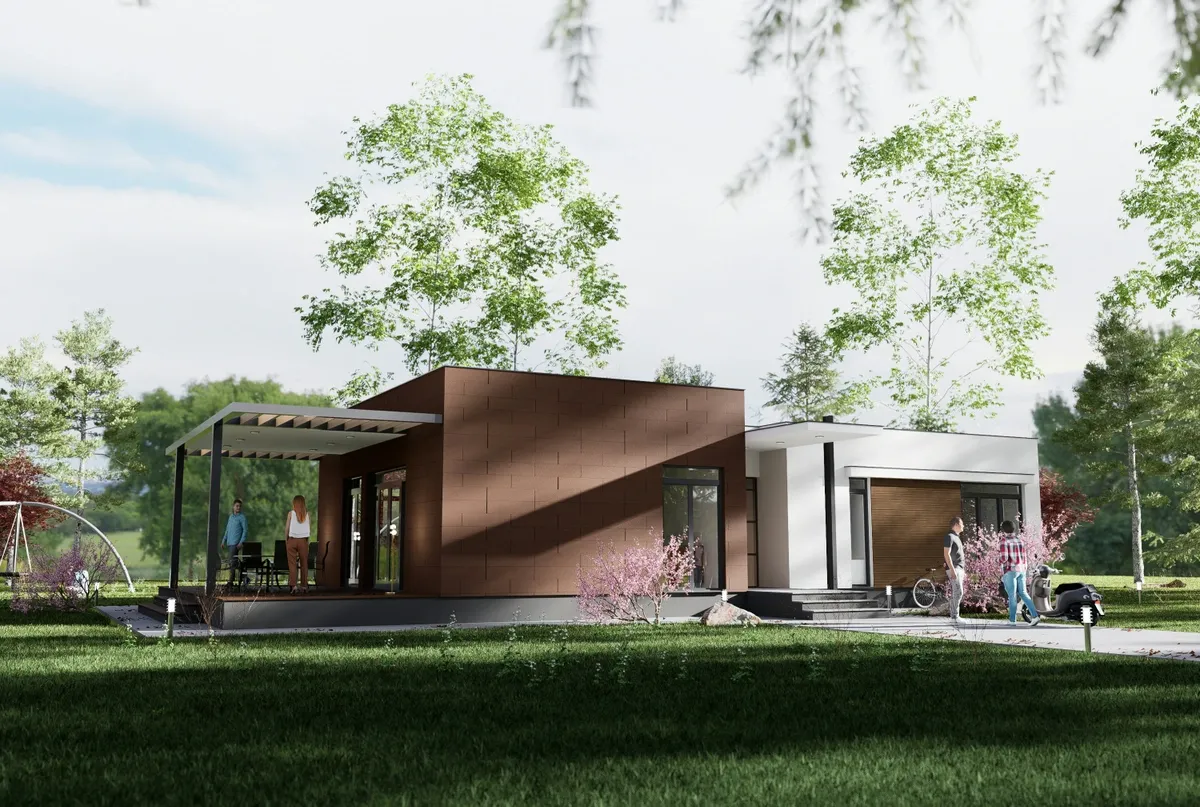
In the ever-evolving field of architecture, staying ahead of technological advancements is crucial for achieving design precision and innovation. Advanced visualization tools such as 3D modeling software, photorealistic rendering, and virtual reality (VR) are transforming how architectural firms conceptualize and present their projects. These cutting-edge technologies not only enhance the accuracy of designs but also revolutionize client interactions and project outcomes, paving the way for a more dynamic and efficient architectural process.
The Evolution of Visualization Tools in Architecture
Historical Context
Historically, architects relied heavily on hand-drawn sketches and physical models to visualize and communicate their designs. These traditional methods, while artistically rich and detailed, often posed limitations in terms of accuracy and scalability. Hand-drawn sketches and blueprints provided a 2D representation of architectural designs, which could be challenging for clients and stakeholders to fully understand. Physical models, on the other hand, offered a more tangible representation but were time-consuming and resource-intensive to create.
The advent of Computer-Aided Design (CAD) software marked a significant shift in architectural visualization. Introduced in the 1960s and gaining widespread adoption in the following decades, CAD allowed architects to create precise, scalable digital drawings. This technology streamlined the design process, reducing the time required for revisions and enhancing the accuracy of architectural plans. CAD’s ability to produce detailed 2D and 3D drawings revolutionized the industry, providing a foundation for more advanced visualization tools to come ( source ).
Technological Advancements
Building on the capabilities of CAD, 3D modeling software emerged in the late 20th century, offering architects the ability to create detailed, three-dimensional representations of their designs. Programs such as AutoCAD, SketchUp, and Revit became industry standards, enabling architects to visualize their projects from multiple angles and perspectives. This transition allowed for more dynamic and interactive design processes, where changes could be implemented and visualized in real-time.
As 3D modeling software evolved, the introduction of photorealistic rendering significantly impacted design precision and presentation quality. Rendering engines like V-Ray and Lumion enabled architects to produce highly detailed and lifelike images of their designs, complete with realistic lighting, textures, and materials. This level of detail not only improved the accuracy of architectural visualizations but also enhanced client presentations, making it easier to convey design intentions and secure project approvals ( source ).
Current Trends
In recent years, the adoption of Virtual Reality (VR) and Augmented Reality (AR) has further transformed architectural visualization. These immersive technologies allow architects and clients to experience designs in a fully interactive environment. VR enables users to “walk through” digital models, providing a realistic sense of space and scale that traditional methods cannot match. AR, on the other hand, overlays digital information onto the physical world, allowing for on-site visualization and real-time modifications.
The integration of VR and AR into architectural practices enhances design precision, facilitates better communication with clients, and streamlines the decision-making process. These technologies are becoming increasingly accessible, making them valuable tools for firms of all sizes aiming to stay at the forefront of innovation ( source ).
Practical Applications of Advanced Visualization Tools
3D Modeling Software
3D modeling software is a cornerstone of modern architectural design, enabling the creation of detailed digital representations of buildings and spaces. Two of the most widely used tools in the industry are AutoCAD and Revit.
-
AutoCAD : Developed by Autodesk, AutoCAD is renowned for its versatility and precision. It supports both 2D and 3D design, allowing architects to create accurate and detailed drawings. AutoCAD’s extensive library of pre-built components and automation of repetitive tasks streamline the design process, enhancing efficiency ( source ).
-
Revit : Also from Autodesk, Revit offers a Building Information Modeling (BIM) approach, providing an integrated platform for multidisciplinary collaboration. It enables architects to create comprehensive digital representations of a building’s physical and functional characteristics, ensuring that changes are automatically reflected across all views of the model ( source ).
Benefits for Architectural Design
-
Accuracy : 3D modeling software allows architects to produce highly accurate models, reducing the risk of errors and omissions. This precision ensures that the design intent is faithfully translated into the built environment.
-
Efficiency : These tools facilitate rapid modifications and iterations, enabling architects to test different design options and make real-time adjustments, which boosts overall productivity.
Photorealistic Rendering
Photorealistic rendering is a technique that creates images nearly indistinguishable from real-life photographs by simulating light, textures, and shadows with sophisticated algorithms ( source ).
Importance in Architectural Design
-
Client Presentations : Renderings provide a realistic visualization of design concepts, helping clients to better understand and approve the project. This clarity can expedite the decision-making process.
-
Approval Processes : Detailed renderings facilitate smoother approval processes by providing stakeholders with a clear and accurate representation of the proposed design, thereby minimizing misunderstandings and ensuring alignment.
Virtual Reality (VR) and Augmented Reality (AR)
Description of VR and AR Tools in Architecture
-
Virtual Reality (VR) : VR tools create immersive, computer-generated environments that users can interact with using VR headsets. This technology allows architects and clients to experience designs as if they were physically present within the space.
-
Augmented Reality (AR) : AR overlays digital information onto the real world, typically viewed through a smartphone or AR glasses. It can be used to visualize how a new building will appear in its actual context or to provide additional details about specific design elements.
Application in Immersive Client Walkthroughs and Design Adjustments
-
Immersive Client Walkthroughs : VR and AR enable interactive virtual walkthroughs of designs, offering clients a realistic sense of space and scale. This immersive experience helps in identifying potential issues early and ensures a thorough understanding of the design.
-
Design Adjustments : These technologies allow architects to make real-time design changes based on client feedback during walkthroughs. This capability speeds up the decision-making process and allows for immediate visualization of adjustments, enhancing overall efficiency.
By leveraging advanced visualization tools like 3D modeling software, photorealistic rendering, and VR/AR, architectural firms can significantly enhance design precision, improve client presentations, and streamline project approvals. These technologies not only elevate the quality of designs but also increase efficiency and client satisfaction.
Integrating Visualization Tools into Architectural Workflows
To successfully integrate advanced visualization tools such as 3D modeling, rendering, and VR/AR into daily architectural workflows, firms need strategic approaches. Here are some key strategies:
Streamlining Design Processes
- Adopt Comprehensive 3D Modeling Software :
- Enhancing Realism : 3D modeling software allows architects to create highly realistic visualizations of their designs. This helps in identifying and rectifying potential design issues before construction begins ( source ).
-
Efficient Iteration : Digital tools enable rapid iterations, allowing architects to explore multiple design options quickly and efficiently.
-
Leverage Photorealistic Rendering :
- Client Presentations : High-quality renderings can significantly enhance client presentations, offering a clear and detailed view of the proposed project. This can help in securing approvals and funding.
-
Marketing and Proposals : Renderings can be used in marketing materials and project proposals to showcase the firm’s capabilities and attract new clients.
-
Incorporate VR/AR Technologies :
- Virtual Walkthroughs : VR technology allows clients and stakeholders to experience a virtual walkthrough of the design, providing a more immersive understanding of the space.
- Augmented Reality : AR can be used on-site to overlay design models onto the physical space, helping in visualizing the final outcome during the construction phase.
Case Study: Successful Integration A notable example is the use of VR by the architecture firm Gensler. By integrating VR into their design process, they were able to provide clients with an immersive experience, resulting in more informed feedback and improved design accuracy. This integration streamlined their workflow, reduced the number of revisions, and enhanced client satisfaction.
Collaboration and Communication
Advanced visualization tools not only improve design processes but also enhance collaboration and communication within project teams and with clients.
- Shared Digital Models :
- Real-Time Updates : Cloud-based 3D modeling platforms allow team members to work on the same model simultaneously, ensuring everyone is on the same page and can see updates in real-time ( source ).
-
Improved Coordination : This leads to better coordination among architects, engineers, and contractors, reducing errors and rework.
-
Enhanced Client Communication :
- Interactive Presentations : Using VR and AR tools for client presentations allows for an interactive experience where clients can provide immediate feedback.
- Clearer Feedback Loops : Digital models and renderings make it easier for clients to understand design concepts and provide clearer feedback, leading to more effective and efficient decision-making.
Training and Adoption
Implementing new technologies can be challenging, but with the right approach, firms can ensure a smooth transition.
- Training Programs :
- Workshops and Seminars : Organize regular training sessions and workshops to familiarize staff with new tools and technologies.
-
Online Tutorials and Courses : Provide access to online resources and courses that staff can use to learn at their own pace.
-
Overcoming Adoption Challenges :
- Gradual Integration : Start with pilot projects to test new tools and refine workflows before a full-scale rollout.
- User-Friendly Tools : Choose software with intuitive UI/UX designs to reduce the learning curve and increase user efficiency ( source ).
- Support Systems : Establish support systems, including access to technical support and user communities, to help staff troubleshoot and overcome challenges.
By effectively integrating these advanced visualization tools into their workflows, architectural firms can enhance design precision, improve collaboration, and elevate client communication, leading to more successful project outcomes.
The Future of Architectural Design with Advanced Visualization Tools
As architectural firms continue to adopt advanced visualization tools, the industry is poised for significant transformation. The integration of 3D modeling software, photorealistic rendering, and virtual reality (VR) and augmented reality (AR) into architectural workflows enhances design precision, streamlines processes, and fosters better communication and collaboration.
By leveraging these tools, architects can create highly accurate and detailed models, visualize designs in lifelike detail, and provide immersive experiences for clients. This not only improves the quality of the designs but also speeds up the approval process, reduces errors, and enhances overall project outcomes.
Minute7 plays a crucial role in this evolving landscape by offering a robust time tracking and expense reporting solution that integrates seamlessly with QuickBooks. For architecture firms, Minute7 ensures that project hours and expenses are tracked accurately and efficiently, allowing teams to focus on leveraging advanced visualization technologies to their fullest potential. With Minute7, firms can streamline their administrative tasks, improve budget reporting, and ultimately, deliver exceptional architectural designs.
For more information on how Minute7 can support your architectural firm, visit Minute7 and explore our comprehensive solutions tailored to meet your needs.



